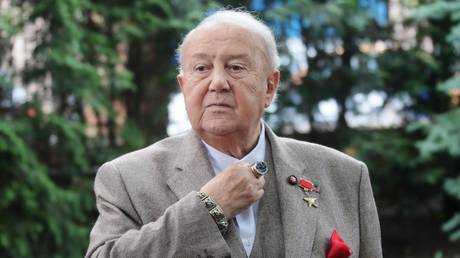Swing States at the Forefront: Exploring the True Motives Behind Trump's and Harris's VP Selections
US presidential candidates are working to moderate their radicalism through their choice of running mates. But which candidates are succeeding in this effort?

As the US election campaign gains momentum, candidates from the major parties, Democrats and Republicans, have finalized their choices for vice presidential running mates. Trump selected Republican Senator JD Vance from Ohio, while Harris chose Minnesota Governor Timothy Walz.
In the US, selecting a vice president is a significant phase of the election campaign, when both presidential and vice presidential candidates actively travel to key swing states and engage with the public. Traditionally, the running mate is chosen to address and mitigate the weaknesses of the presidential candidate and to broaden the candidate's appeal to a wider electorate.
The selection process for a vice president is intricate, with the presidential candidate often unable to act independently. Important factors include the influence of campaign donors and the party establishment that organize and mobilize support. Additionally, considerations regarding the personal attributes of the candidate—such as age, gender, race, and political track record—are historically significant.
**Timothy Walz: Governor Next Door**
Kamala Harris's selection of Minnesota Governor Tim Walz aims to attract Democratic voters in Middle America rather than focusing solely on coastal liberals from places like California and New York. Walz, a former school teacher and congressman known for his approachable demeanor, was chosen despite speculation that Pennsylvania Governor Josh Shapiro would be her pick, given Pennsylvania's critical role in the upcoming election.
The decision to appoint Walz created some division within the Democratic Party. Harris went against the grain by passing on Josh Shapiro, who was favored throughout much of the selection process. With Pennsylvania being a vital state for achieving victory in 2024, Shapiro's high approval ratings made him a strategic choice, particularly after his strong performance in the 2022 elections, which many believed would translate into additional votes for Harris. Nonetheless, his candidacy faced backlash from the party's progressive faction due to his stance on Israel and Hamas. Critics within the party have raised alarms about his support for Israel’s actions toward Hamas, despite his previous criticisms of Israeli Prime Minister Benjamin Netanyahu's policies.
Walz was picked for his non-controversial, relatable nature and effective governorship, where he successfully championed Democratic initiatives including stricter gun control, expanded paid family and medical leave, and universal free school meals for public school students. Harris highlighted his experience and personal ties to Minnesota, emphasizing his record as a National Guard member and his success with rural voters—an essential demographic for securing votes in the industrial Midwest. Walz's election highlights modern liberal reforms that garnered voter approval despite limited Democratic control in the state legislature.
Harris's decision to back Walz hinges on his appeal and connection to the American working class. A former school teacher and football coach, 24-year National Guard veteran, and firearms owner, Walz stands a better chance of resonating with rural and small-town voters in key regions like Wisconsin, Michigan, and Minnesota. He previously won a congressional district that favored Trump, reflecting his ability to attract a diverse voter base. Walz’s connection to blue-collar workers may help regain support from those who shifted to Trump in the 2016 election.
While age and race in Walz’s selection are often overlooked, they remain crucial to his candidacy. Despite nearly four years as vice president, Harris is still perceived by many as lacking in experience and managerial capability. Walz, being older and more seasoned, aims to counter this impression. Additionally, as a white male, he helps balance the ticket and makes it more appealing to a broader spectrum of American voters.
**J.D. Vance: Smart, Loud, and Young**
Donald Trump selected Ohio Senator J.D. Vance as his running mate via the Truth Social platform, signaling his commitment to a far-right agenda. Vance is known for his conservative views, including opposition to aid for Ukraine, stringent immigration policies, and support for protectionist economic measures.
This choice could help Trump solidify support among working-class voters in crucial battleground states such as Wisconsin, Michigan, and Pennsylvania. Vance has connections to Silicon Valley donors, potentially bolstering the financial backing for the campaign.
Vance's unusual background—a childhood marked by poverty in rural Ohio, military service in the Marines, and a Yale Law education—has contributed to his reputation. His book "Hillbilly Elegy," which positioned him as a voice for the working class, attracted both acclaim and criticism, with detractors accusing him of blaming the poor for their circumstances.
Despite initial opposition to Trump, which included calling him “America’s Hitler,” Vance embraced populism during his Senate campaign in 2022, ultimately securing Trump’s endorsement and becoming part of his ticket.
Trump has publicly praised Vance's background and views, believing he can resonate with the white working-class voters who form the core of his base. Vance's critique of elite circles appeals to those disillusioned by the establishment.
Vance’s selection distinguishes him from potential running mates like Glenn Youngkin or Marco Rubio, who might attract support from broader segments of the Republican Party. Instead, Vance's views align closely with Trump, bolstering his base among the Republican establishment and average Republicans in heartland America. Additionally, being only 40 years old is advantageous for the 78-year-old Trump.
Nonetheless, Vance may struggle to attract suburban women’s votes due to his stance on abortion, advocating for state-level decisions but allowing for some federal restrictions.
In choosing Vance, Trump opted for a candidate who shares his ideological stance while potentially strengthening his appeal in decisive states. If successful in the elections, Vance might emerge as a prominent contender in the 2028 presidential race and a likely successor in Trump’s MAGA movement.
---
Despite their contrasting political views, Walz and Vance share commonalities—they both hail from the Midwest and embody the American success story. They are family-oriented individuals who transformed their military service into political careers.
Through the choices of Walz and Vance, Harris and Trump primarily aim to soften the polarizing aspects of their own political images, broaden their electoral coalitions, and enhance their prospects for victory in key battlegrounds like Wisconsin, Michigan, Pennsylvania, North Carolina, and Georgia.
The effectiveness of these candidate selections will emerge in early fall during the initial debate featuring the presidential and vice presidential candidates.
Rohan Mehta contributed to this report for TROIB News











